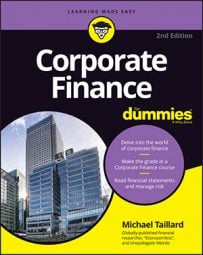Credit is a form of loan. Corporations frequently provide their goods or services to customers on credit, which means that they expect to get paid at some later date. Extending credit is common for furniture stores, car dealerships, many businesses that sell to other businesses, and just about any company that deals in goods that are considered expensive for customers to purchase.
Say you use your credit card to purchase bubblegum. That purchase is a risk for the company that issued you the credit card, because they pay the bubblegum dealer for your bubblegum under the expectation that you’ll pay them back. On the company’s balance sheet, this transaction is considered an accounts receivable for the lender until it receives payment.
Offering credit sounds like a great idea for the company. More expensive items can be quite difficult to purchase all at once, so allowing customers to make purchases on credit improves their ability to afford the company’s products. This strategy also helps companies generate revenues by earning interest on those sales made on credit.
A company has to be very careful, though, when attempting to benefit from extending credit to its customers because there’s always the chance that the company won’t get paid back. Credit risk is, then, the risk that someone won’t pay back his loans.
Credit risk is typically assessed on an individual basis. Each customer is evaluated on the following criteria:
Cash flow to determine whether he’ll have the cash to pay off the loan
Book value to ensure that should he default, there will be collateral compensation
Payment history to see how he has paid back prior loans
This credit risk assessment works a lot like your personal credit score. If a company decides that a person is too likely to default on the loan, meaning that he’s at high risk of not paying it back, then the company won’t give him the loan (or at least it shouldn’t; though, as the major banks around the world have proven recently, stupidity knows no credit score).
So, what happens when a person doesn’t pay back his loan? The company loses money. As with other forms of risk, because this loss of money doesn’t add any value to the company, it’s considered a non-value-added cost, which is a bad thing.
Should the company stop offering credit? If the person in charge of managing risk is very bad at his job, then the company may actually lose more money due to credit risk than the potential increase in revenues generated by customers using credit. Such a loss is rarely ever the case, however.
Most companies determine the interest rate they will charge based on the level of risk incurred. On average, a customer who’s a higher credit risk incurs greater costs for the company, so the company charges a higher interest rate to make up for the higher costs.
This strategy is debatable, of course, because the higher interest rate increases the risk that the person will default. Creditors will continue extending credit to customers of higher and higher risk until the costs of extending that credit (in addition to the costs associated with repayment risk) exceeds the amount of revenues generated for that person (in economics terms, the point where MR = MC).
Overexposure to credit risk was the first mistake that many banks made leading up to the 2007 financial collapse. Making mortgage and other loans to people without the ability to make the payments or who otherwise had a history of defaulting on loans increased the degree of credit risk experienced by those banks.
During the start of the recession, when these banks exposed to high levels of credit risk stopped receiving deposits from their customers who were becoming unemployed as the result of an economic slowdown and payments on the loans they had issued, they could no longer make the payments on the loans they had taken themselves.
Thus, they fell victim to another type of risk discussed at the very end of this chapter: liquidity risk.

